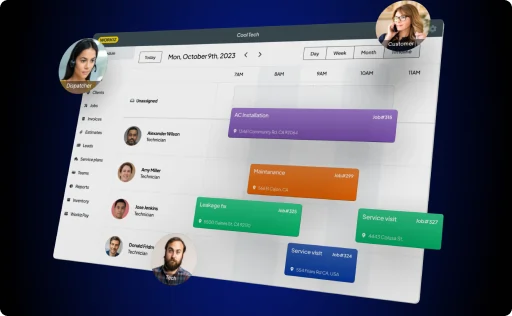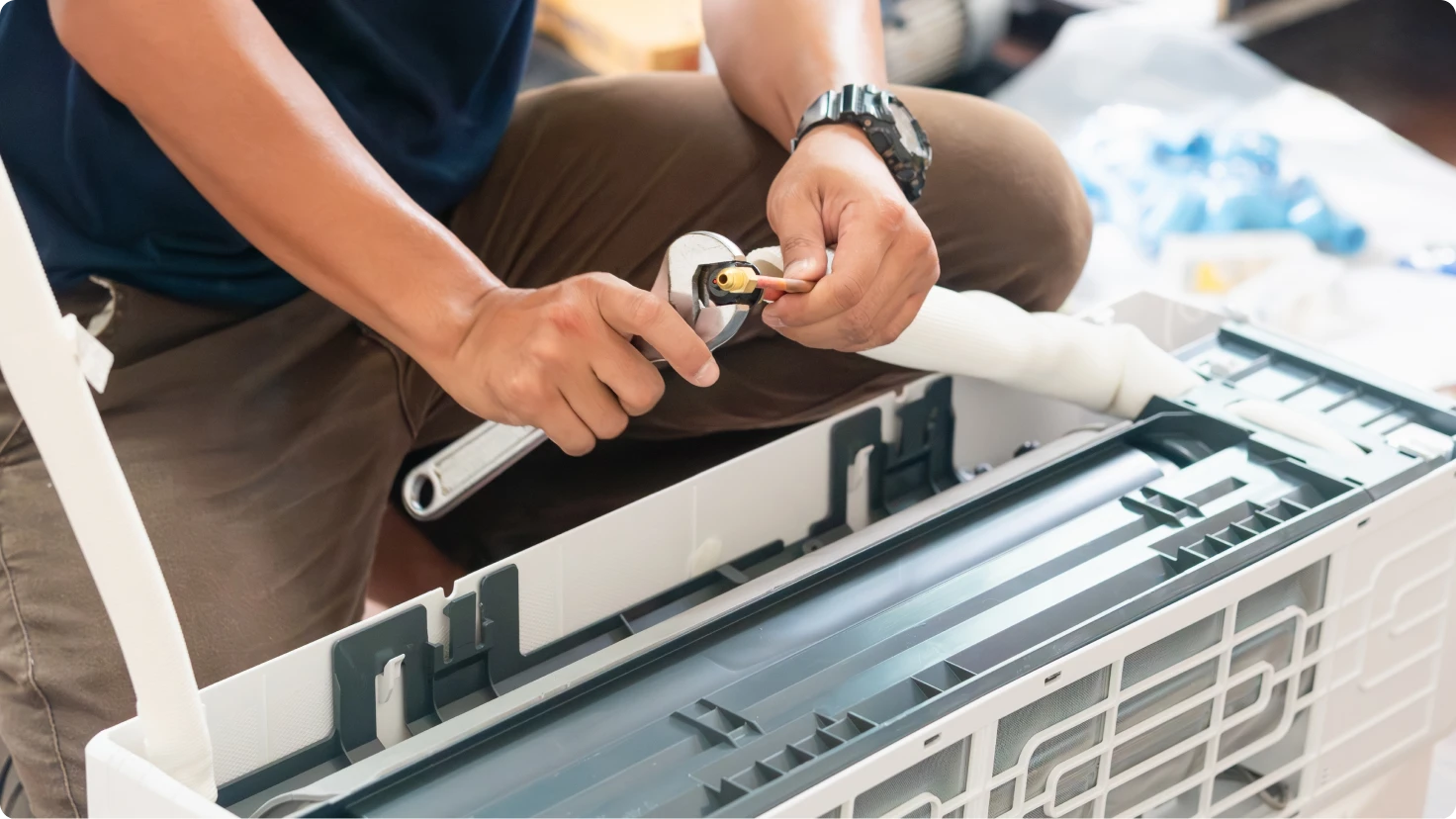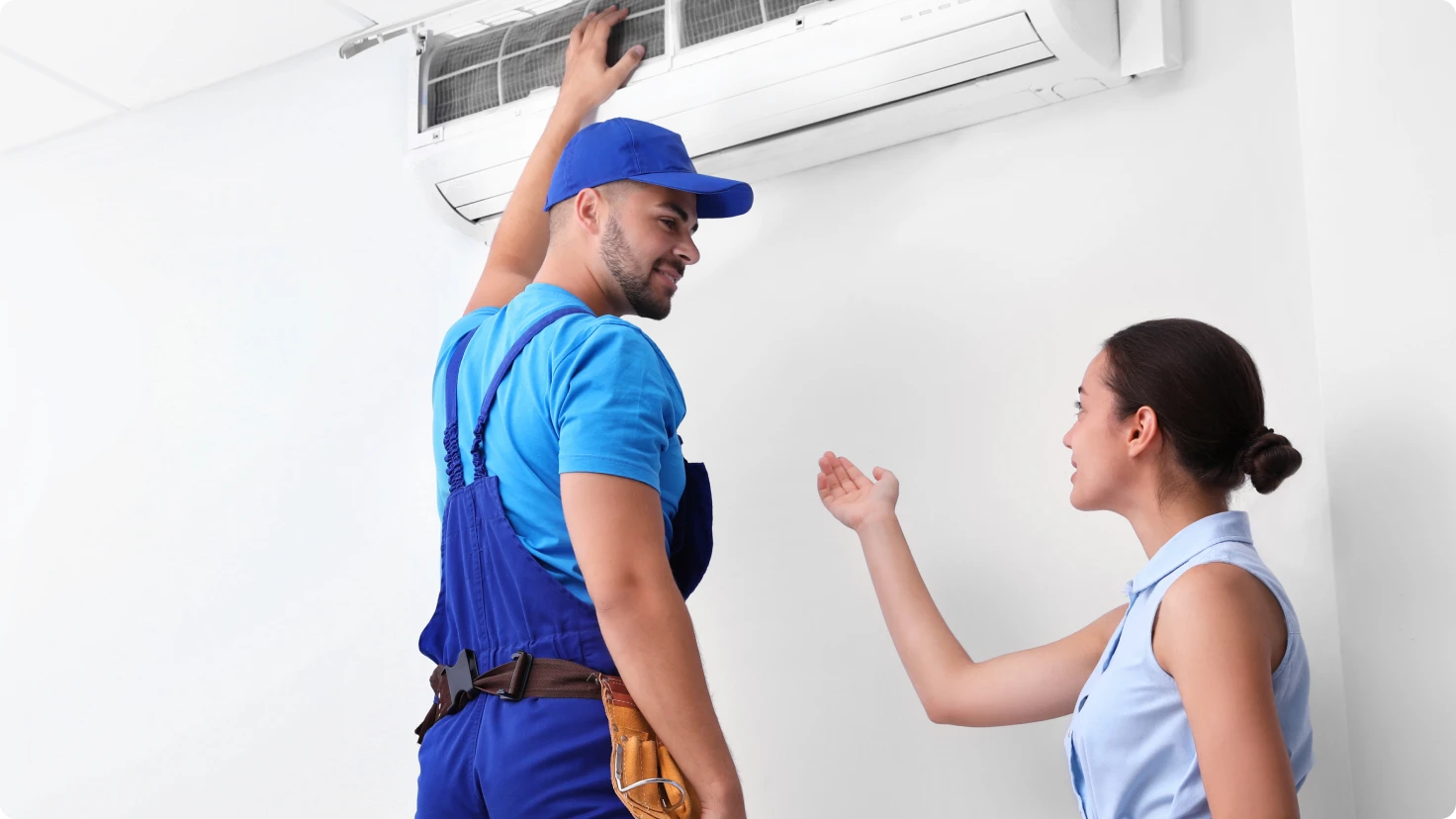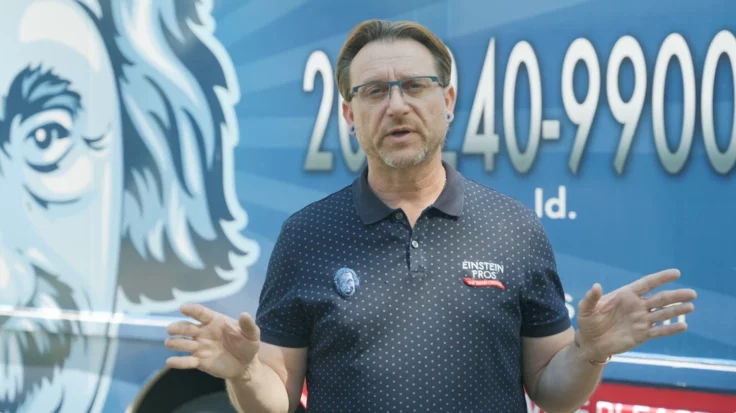But recently, John noticed a decline in the rate of his customers who asked him for replacements.
Why?
He assumed the reason was because homeowners (especially) were holding onto their systems longer than usual, due to the state’s economic uncertainty — but this is everywhere.
Studies have shown that there is a rapid decline in the demand for HVAC replacements for several reasons and that if the decline continues, revenue in the trends in HVAC industry is expected to drop by 0.4% in 2028.
So what did John Smith do?
Honing his repair skills, John shifted his focus into offering more preventative maintenance plans while providing quality, cost-effective, and reliable repair services that’ll keep existing systems running smoothly. In the end, John did not only retain his customer base but he even expanded it.
According to him, “By focusing on repair and maintenance, we’re not only helping our customers save money, but we’re also building long-lasting relationships with them. It’s a win-win situation that has really paid off for our business.” – John Smith, John’s Heating and Cooling.
This can also be your story. But even if John’s sounded easy, it’s not as straightforward as a change of heart. You need to understand fully, the factors leading to the decline, as well as the strategic steps to take during the pivot. That’s what this blog is about. So, if you’re set on saving your business from the current decline in the replacement market, keep reading!
Factors contributing to the shift towards the repair market
Before providing the solutions, let’s see why the decline is happening in the first place. Just as John thought, one of the reasons for the shift to the repairing HVAC market is the fluctuating economic concerns — hence, homeowners are simply not that motivated to invest lots of money into getting a new HVAC installation when their old one just needs a minor fix.
Think of it this way.
An AC unit stops getting as cold as it’s supposed to be (due to a refrigerant leak). A fix would cost you only about a few hundred dollars — depending on the severity of the leak. But for a replacement, you’d need about $2,000 to $5,000 or even more, depending on other factors.
here’s a table outlining common air conditioning fixes along with their average prices:
| Repair | Average Price Range |
|---|---|
| Refrigerant refill | $150 – $300 |
| Compressor repair | $500 – $2,000 |
| Condenser coil replacement | $600 – $2,000 |
| Capacitor replacement | $100 – $300 |
| Evaporator coil replacement | $650 – $2,500 |
| Thermostat replacement | $100 – $300 |
| Air filter replacement | $20 – $50 |
| Fan motor replacement | $200 – $600 |
| Ductwork repair/replacement | $300 – $2,000+ |
Now, think about it — which would you rather invest in knowing that a new one would still encounter another possible refrigerant leak?
If you chose the former (repair), then you are one of the millions of people who’d rather repair than replace their HVAC units. Statistics tell that the trends in HVAC repair and maintenance markets are also expected to grow significantly, with the global market size projected to reach $110.54 billion by 2028, growing at a rate of 8.0%.
HVAC Maintenance Service Market Size (2023-2030)
But why? What are the factors leading up to this?
Economic Concerns
Economic concerns play a significant role in the shift towards the repair market. With the global economy experiencing high inflation rates, consumers are becoming more cautious about their spending, particularly on big-ticket items such as appliances and electronics. As a result, homeowners are increasingly opting to repair their existing appliances rather than replacing them with new ones. ACCA CEO Bart James said “HVAC contractors need to adapt to the economy, we can’t just assume people are going to reach into their pocket and replace. Contractors need to help customers get through the current need.” as told in an ACHR news article.
COVID-19
Sure, the reign of terror is over, but the pandemic already has had a significant impact on the repairing HVAC and maintenance market. The pandemic led to supply chain disruptions and operational challenges, which caused many businesses to reduce production or shut down their facilities entirely. In response, many companies decided to invest in maintenance, repair, and operation (MRO) products and services to ensure the efficient functioning of their machinery and equipment.
Impact of the Technology Transition Rule
The Technology Transition Rule is an initiative put forward by the US Environmental Protection Agency (EPA). The rule is aimed at reducing reliance on climate-damaging hydrofluorocarbons (HFCs) in specific sectors, including the HVAC industry. As a result of this rule, buying activity has also slowed because contractors and homeowners are afraid that pushing and buying an old system might become obsolete or more expensive once the new technology (with more eco-friendly benefits) becomes available.
Increased Preference for Repair Activity
This shift towards repairs can be also attributed to ‘preference.’ Traditionally, the ratio of new system installations (reflected in “New Invoices”) to initial consultations (represented by “New Quotes”) has been higher. However, we’re seeing a steeper rise in New Quotes compared to New Invoices and this trend signifies a growing customer preference for repairs over full system replacements. However, this brings us to more of the factors that lead to the shift including:
- Inflated home prices that may have locked many homeowners into their existing properties.
- Rising mortgage rates that make financing a new system replacement more expensive.
- The cost of HVAC units has increased, making repairs a more financially attractive option, especially when a failing system can often be revived with a well-timed repair.
Strategies for HVAC contractors to adapt to the repair market
Let’s get this straight. Just because customers are shifting from replacements to repairs does not mean every HVAC contractor is onboard. However, it’s recommended that every contractor should embrace the repair market and focus on building a strong service business. But again, why?
Why is the shift so much recommended for contractors? Before we dive into the strategies for proper adaptation, let’s look into some of the things HVAC service providers will gain from the shift into the repair market.
Enhanced profit margins
If you don’t already know, repairing HVAC units brings companies an even higher profit margin compared to replacements. Here’s how. It’s true that installation will earn you a significant revenue upfront (we’re talking in the thousands) and repair isn’t a lot. However, when you repair or offer maintenance services, you’d usually be required to pay less or nothing at all for materials or tools. That’s because repairs depend more on your expertise ( selling HVAC equipment & services) rather than buying additional tools and materials. Therefore, at the end of the line, you’ll be pocketing a greater percentage of the service fee.
Stronger customer relationships
Another advantage is that when you prioritize repairs and maintenance, you foster trust and loyalty with your customers. Thing is that regular service calls allow you to build rapport, identify potential issues early on, and prevent costly breakdowns. This proactive approach positions you as a trusted advisor, not just someone who replaces equipment when it fails. On top of it all, satisfied customers are more likely to recommend your services to others, leading to a steady stream of referrals and business growth.
Optimized overhead costs
The third (but not the last) benefit is that a focus on repairs can help streamline your operations and potentially reduce overhead expenses. First, you’ll require less warehouse space for storing new equipment; second, your service vehicles would experience less wear and tear compared to the constant travel demands of installation jobs.
But it’s not enough just to know why the pivot is necessary. It’s also vital to understand the best way to make the shift. While it’s still the same business, it’s a different service you’ll be offering. Therefore, you need to ensure that you are following a working strategy for success.
Tactics to implement for replacements during the shift.
While on the move for a pivot, here are some ways you can soften the landing on the replacement market for your customers:
Offer financing options to make replacements more attractive
Instead of a huge payment upfront, use management software to ease financial burden for homeowners, hence, making new HVAC systems more accessible.
Protect margins through consistent pricing and cost management
Another option is to maintain consistent pricing across your services while carefully managing operational costs to ensure healthy profit margins even with financing offers.
Educate homeowners about the long-term benefits of replacements
Using any medium (including blogs and social media), create content explaining the long-term cost savings, energy efficiency improvements, and enhanced comfort that come with replacing an outdated HVAC system.
Emphasize the value proposition of a new HVAC system
Indeed replacements may be costly. However, to enhance the soft landing, highlight the unique features and benefits of new HVAC systems, such as improved air quality, smart controls, and warranty coverage or labor protection plans, to convince homeowners of the upgrade’s value.
Offer maintenance packages to encourage preventive maintenance
Now, for the subtle shift. Offer tiered maintenance packages that provide regular inspections, tune-ups, and priority service to incentivize preventive maintenance and build recurring revenue. Luckily, numerous services can help with this.
Diversify services to provide additional value and generate new revenue streams
Finally, don’t be afraid to expand your service offerings to include air duct cleaning, indoor air quality testing, selling HVAC equipment & services, or smart home integration to provide homeowners with additional value and generate new revenue streams.
Pro tip: offer a midlife cycle refresh as an alternative to full replacement
It’s time for a new perspective into the entire market. What if you skip replacement and repair/maintenance and you move on to a midlife cycle refresh?
Let’s dive into that for a little bit.
What’s the option of the mid-life cycle refresh?
A mid-life cycle refresh in HVAC is the process of strategically upgrading certain components and optimizing the performance of your existing heating, ventilation, and air conditioning system.
That is, instead of replacing the entire system, you’ll be focusing on improvements that can extend the HVAC system’s lifespan, enhance its efficiency, and potentially avoid a costly full replacement.
The type of services that’s involved in a mid-life cycle refresh include:
Replacing key components
You should be concerned with swapping out older, less efficient parts with newer, more efficient models. That is, instead of changing up the entire units, you’ll be focusing on parts like filters, thermostats, or even specific coils or motors.
System cleaning and maintenance
While this is also essential during repair and maintenance, it is a part of mid-life cycle refresh. Here, you’d be performing a thorough cleaning of the system’s internal components, ductwork, and coils to improve airflow and efficiency.
System optimization
Finally, as a HVAC contractor, you’d also be expected to calibrate the thermostat, check refrigerant levels, and ensure proper duct sealing to optimize overall system performance.
In general, your work would be to refresh the HVAC unit, which significantly costs less than a complete replacement. Additionally, these services will improve the unit’s efficiency and functionality, and potentially postpone the need for a full replacement for several years.
But are those the only benefits of choosing a refresh?
Why should customers choose the mid-life cycle refresh?
While repair does help a bit, it is more focused on the area of concern alone. However, a refresh attends to the entire unit and hence, can significantly improve the system’s efficiency, lowering your energy bills and reducing your environmental impact. Also, since a refresh is proactively addressing potential issues and optimizing performance, homeowners can extend the lifespan of their existing HVAC system, saving them money in the long run. This is also a great opportunity to offer your customers a routine maintenance agreement that will give them peace of mind and keep your schedule full all year round.
Finally, unlike repairs that address single problems, a refresh focuses on strategically upgrading components to improve overall system performance and cost-effectiveness.
Conclusion
While we may have mentioned multiple options from replacement, to repair and then a refresh, what matters at the end of the day is building a satisfied service base. The fact remains that HVAC businesses thrive on repeat customers and referrals. Therefore by prioritizing customer satisfaction throughout the service lifecycle, you lay the groundwork for increased replacement margins and close rates in the future.
But that’s just one part of the entire topic.
To really improve ROI, you need to have HVAC business management software. Not only will you benefit from streamlined operations that’ll free up your team’s time to focus on customer service and sales, but the software’s real-time data and insights will also help you optimize your operations, reduce costs, and make data-driven decisions for your business.
Similarly, the software facilitates communication with your customers, keeping them informed and improving overall satisfaction, which in turn, pushes your business toward success from start to finish.
So, if you’re yet to get started on a HVAC management software, what are you waiting for? While some offer competitive prices, some very few and impeccable tools allow you a few months of trial period for a smoother adoption. Are you a Trane or American Standard customer? Workiz is a preferred vendor of Trane and American Standard and you may be eligible for up to 50% off!











